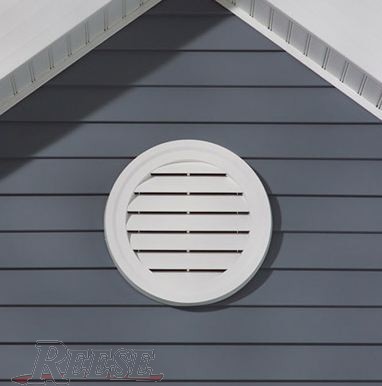A gable roof is one of the most easily recognized structures on a Minneapolis residence. While such a roof creates a visually pleasing image due to its upside-down “V” shape, there is an important practical reason for this design as well. Due to the steepness of the slope, snow, water, and debris are shed off the roof more easily, leading to less mold, rot, and mildew.
The function of a Gable Vent
Designed to increase the airflow into the gable roof, the gable vent is located at the front of the roof. While they can be installed as a decorative option, in order to be an effective venting solution, a fan should be attached as well.
The Difference Between Ridge Vent Versus Gable Vent
While a gable vent can be installed as a purely decorative measure, ridge vents have a definitive purpose. Situated along the peak of a gable roof, ridge vents are hidden by the shingles of the roof. These small vents provide a means for air to flow under the roof while also keeping rain from entering the attic space. Because gable vents rely on changes in the wind in order to work properly, when the wind is absent or it changes direction so that the vents are not activated, moisture and hot air can become trapped within the attic. Over a period of time — the duration varies depending on the season and other factors — trapped moisture can lead to mildew and mold.
Installation of Gable and Ridge Vents
If your St. Paul metro area home has a steep gable roof, it needs a gable vent. Ridge vents will not provide an adequate amount of ventilation to the attic. The installation of both types of vents is best left to a professional roofing contractor that specializes in residential roofing like All American Roofing & Restoration. They have the tools, knowledge, and manpower to tackle this job — no matter how large or small.





